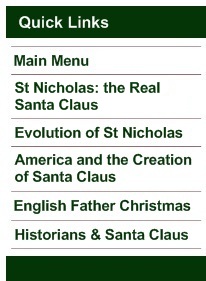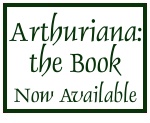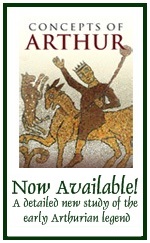
 |
 |
St Nicholas of Myra: A Guide to the Real Santa Claus Introduction Although St Nicholas is usually acknowledged as the 'original Santa Claus', we actually know vanishingly little about him for certain; indeed, his very existence has sometimes been called into question, due to the lack of secure references to him in contemporary sources. All that can be said with any degree of confidence is that St Nicholas probably lived in the fourth-century in the Lycian port of Myra, in the south-west of modern Turkey, and that he was a bishop. In addition, it is likely that he died on the 6 December, which was celebrated as his feast day in the medieval church calendar; later accounts also add that St Nicholas attended the Council of Nicaea and was vocal in opposing the Arian heresy, which isn't impossible. One of the earliest legends that was attached to his name tells how St Nicholas heard of a man who could not afford the dowries for his three daughters, with the result that he intended - regretfully - to send them to the brothel to work. St Nicholas saves them from this fate by throwing three bags of gold through their window at night: it is this tale which is often identified as the root of St Nicholas's reputation as a gift-giver. Whether or not this event, or something like it, really happened is entirely uncertain; however, it is more credible than some of the other tales told of St Nicholas. In this context it ought to be noted that, in the course of the development of his legend, St Nicholas does appear to have taken on some of the qualities/roles that originally belonged to the pagan deities Artemis and Poseidon. Guide to Online Resources St Nicholas Centre - A superb and very extensive website dedicated to St Nicholas. Includes details of his life and legend (for example Who is St Nicholas?, St Nicholas - Bishop of Myra, Is St Nicholas a Real Saint?, and Was St Nicholas a Real Person?), a very good selection of images, and a piece on St Nicholas and the Origins of Santa Claus. Make sure you follow all the links (click here for site map) as there is an immense amount of information here. The Life of St Nicholas - An account of the life of St Nicholas based on the early tenth-century biography of St Nicholas by Symeon Logotheta the Metaphrast. See the following for actual extracts from Symeon’s Life of St Nicholas. Also available online is the early and interesting Stratelatis account of St Nicholas; the Life of St Nicholas the Bishop compiled in 1275 by Jacobus de Voragine, Archbishop of Genoa; a collection of medieval and later icons of St Nicholas; and Butler’s Lives of the Saints (1776-9).
A number of Catholic and Orthodox websites give details of the historical St Nicholas and his cult: St Nicholas; St. Nicholas of Myra; St Nicholas of Bari; and The Life of St Nicholas. Other online resources include Bruce Forbes's Christmas: a Candid History, which discusses St Nicholas in chapter four and is available via Google Books as a limited preview; there is also a Wikipedia page on St Nicholas. Most modern scholarship seems to agree that the legend of St Nicholas includes elements from the myths of both Artemis and Poseidon (see, for example, Graham Jones's article). This is mentioned in several of the sites linked here; two sites that use this to argue that he is largely or wholly a Christianised pagan myth are Origin and History of Santa/St Nicholas and Santa Claus - Who Is He?. *
* * * *
Copyright ©
2004, 2015 Caitlin R. Green. All Rights Reserved. To cite articles or pages
from this website, use a service such as WebCite or
alternatively see one of the following style
citation guides. Comments and queries via email to Caitlin R. Green |
 
|